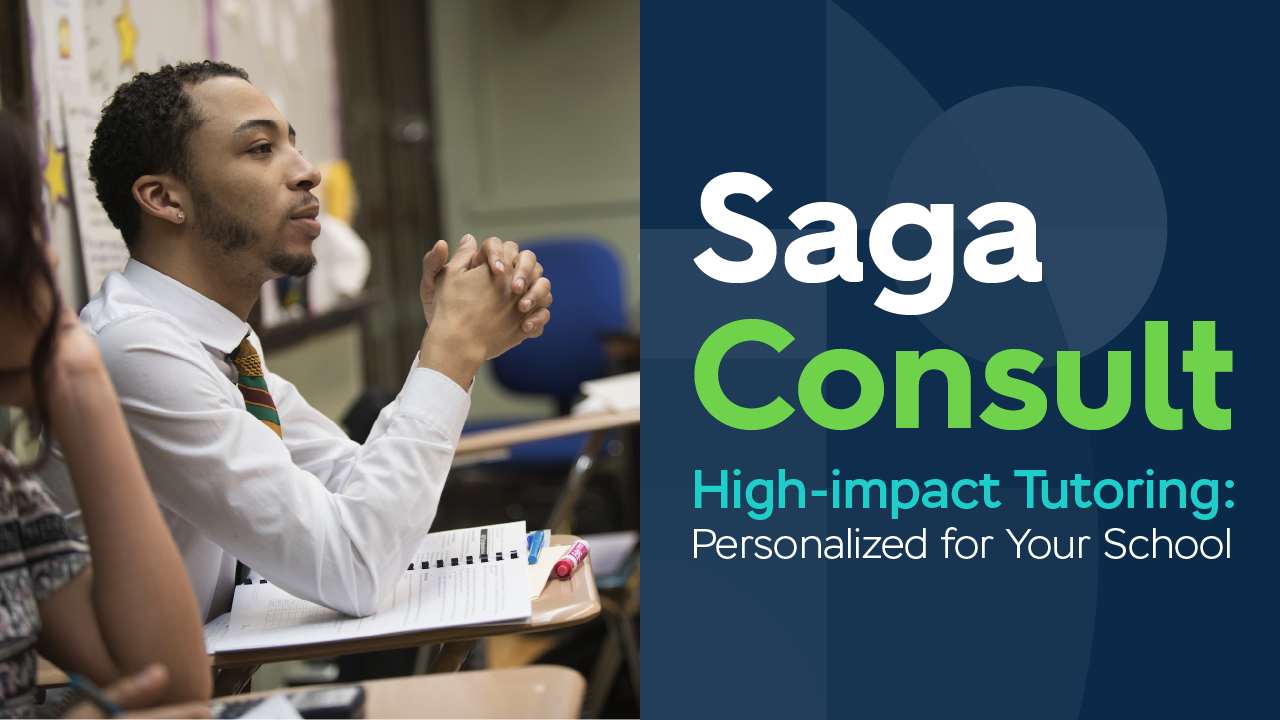The data does not lie. Black and Latinx people are underrepresented in STEM (science, technology, engineering, and math) fields and academic pursuits. Only 16% of Black and Latinx people are employed in STEM professions. For Black females entering college, only 3.2% expressed interest in majoring in engineering.
The reasons have nothing to do with ability and everything to do with accessibility and exposure.
Systemic and Structural Barriers
According to a report from Jobs for the Future, the primary reasons for STEM underrepresentation are “systemic and structural barriers that Black learners confront from an early age into adulthood.” Not only do these Black and Latinx students have educational inequities, but they do not always have access to a high-quality curriculum.
Dr. Karl Reid, Chief Inclusion Officer of Northeastern University in Boston, MA, and Saga Education Board member said, “There are structural, cultural, and individual aspects to educational inequities. Education is allocated based on wealth in the U.S., which is closely aligned with race. Historically, this has been perpetuated by structures that sanction access to high-quality educational experiences.”
Dr. Reid noted that less than half of the Black and Latinx students in high-minority districts have access to a full range of math and science classes. “Even if they took all the classes that are available, they’d be unqualified to enroll in their flagship university,” he said.
Funding, Failures and STEM Fields
While most white students will attend a high school that offers calculus, two-thirds of Blacks will not. Majority-white schools receive, on average, $2,000 more in funding per pupil than do majority-Black schools.
These factors affect graduation rates. Eighty percent of students who drop out of high school cite course failures as their top reason for not earning a high school diploma, and Algebra 1 as the course most failed. Only 20% of students who fail Algebra 1 in ninth grade will go on to receive a high school diploma, compared to 85% of those who pass the course.
This is important when it comes to economic growth and mobility. According to the U.S. Bureau of Labor Statistics, STEM fields are one of the fastest-growing careers, and one of the top-paying fields. In addition, those who major in STEM disciplines in college, tend to recoup their initial educational investment, meaning they experienced a higher ROI (return on investment) according to recent research from Third Way.
However, there are some things that schools are doing now to help address educational inequities and close the opportunity gap.
Introduce Project-Based STEM Learning Early
When it comes to K-12 aged students, some experts say that schools can encourage STEM concepts with project-based learning that combines real-world projects that bring STEM ideas to life.
Implement Evidenced-Based High-Impact Tutoring
In-school, high-impact tutoring (sometimes called high-dosage tutoring) in small groups with a tutor who works with them throughout the school year has been proven successful in increasing learning.
The evidence for in-school tutoring is hard to ignore. In multiple large-scale randomized control trials, Saga Education:
- Increased student math learning by 2.5 years in one academic year
- Reduced math course failures by as much as 63%
- Reduced non-tutored course failures by as much as 26%
Provide Professional Development and Networking Opportunities
In STEM, representation is important. Black and Latinx children and teens may not see how relevant STEM fields or academic pursuits are to them. “There’s also a set of cultural norms, values, expectations, and behaviors that are reinforced. In other words, these children don’t see a lot of engineers and scientists that look like them,” said Dr. Reid.
Whether a young person connects with a mentor, finds a role model or joins a young professionals’ STEM association, for example, networking is essential. When young people see role models that look like them in STEM fields, they see possibilities for themselves.
Benefits of Diversity
Creating more diversity in STEM fields may help create “new generations of wealth and opportunity. It challenges perspectives, problems, people, and processes. It adds innovation. It broadens the perspective and the solutions available. That’s why Saga is building a pipeline of people who are STEM competent,” said Dr. Reid.
High-impact tutoring presents an opportunity to tap into a new and diverse talent pool. Saga’s tutors are 30-50% Black or Latinx. At the lowest end of this range, it is still double the national average for teachers. Again, the importance of representation cannot be underestimated
Dr. Reid said he sees some positive changes in STEM representation and educational inequities. “I am seeing the country have an honest conversation about its racial history and address the root of the problem and not just the symptoms. This gives me hope,” he said.


